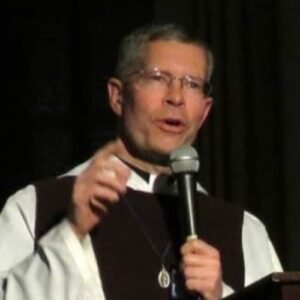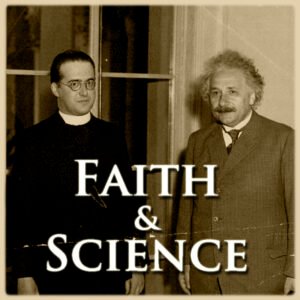by Rev. Fr. Benedict Hughes, CMRI
(Summer, 2017)
The devoted sons of several religious orders were the predominant early missionaries of the territory which later became the United States. These great religious families were the Franciscans, the Dominicans and the Jesuits. Among the latter religious, we are all familiar with the eight Jesuit martyrs of North America, who were canonized in 1930 by Pope Pius XI. Three of them gave their lives in what is now New York State.
The first canonized American martyr was René Goupil, a Jesuit lay brother who was killed in 1642 at the village of Ossernenon, near the present day town of Auriesville. His companion in slavery to the fierce Iroquois, the Jesuit priest Isaac Jogues, eventually escaped and returned to France. But his zeal for souls would not allow him to rest from his labors, and so he returned to the Iroquois, where, four years later, he also was martyred, along with the Jesuit cooperator John LaLande. These men were the first flowers of many saintly Jesuits who labored for souls in our territory.
Two years before Fr. Junipero Serra, the more famous Franciscan missionary of the southwest, was born, a saintly Jesuit priest passed away in that territory. His name was Eusebio Kino, an Italian Jesuit who was even more prolific in his work than the famed founder of the California missions. American Catholics, especially those who live in the southwest, ought to become familiar with the life and labors of this zealous promoter of the Faith.
Which saint inspired Eusebio Kino to become a missionary?
Eusebius Chinus was born at Segno, in the southern Tyrol, close to the famed city of Trent, in 1645. (Later, working under the auspices of the kingdom of Spain, his name was changed to the Spanish Eusebio Kino.) As a young man, Eusebio developed a great devotion to the foremost Jesuit missionary, St. Francis Xavier. Like him, he burned with the desire to travel to China to convert the heathens in that vast country.
Fr. Kino became known as the “Padre on Horseback” for his ability to average 30 miles a day in his extensive missionary journeys.
It is particularly interesting that often the most indefatigable missionaries were previously of fragile health. Their interior zeal and fortitude often supplied what nature lacked. In the case of Eusebio, during a grievous illness of his youth, he made a vow to add to his baptismal name that of Francis in honor of the great apostle of the Indies. Restored to health, he took the name of the saint and entered the Jesuit order in 1665.
As a young Jesuit, Eusebio was sent to various houses of studies for his religious and academic formation, before being ordained to the priesthood in 1677. Despite his desire to go the Orient, however, he was sent to Spain in order to sail for the missions of America. At length he reached Mexico in 1681.

Initially, Fr. Kino was assigned to lead an expedition to Baja California. After a couple years, however, the Jesuits were forced to abandon that mission due to a prolonged drought, returning to Mexico City in 1685. But far from this first excursion being a failure, it provided valuable experience and demonstrated our missionary’s extraordinary ability to learn the native dialects, to devise valuable maps and writings for missionaries to come, and to prove the unique ability of Fr. Kino to travel great lengths on horseback. He later became known as the “Padre on Horseback” for his ability to average 30 miles a day in his extensive journeys.
How many missions did Fr. Kino establish?
It was in 1687 that Fr. Kino began his life’s work, establishing missions throughout northern Mexico and in present-day Arizona. His incredible travels encompassed some 50,000 square miles in which he established 19 missions, not counting smaller outposts. Fr. Kino interacted with 16 different tribes, always spurning the protection of the Spanish military, concerned only with the salvation of souls.

These missions were not merely Catholic villages with a church and resident priests, for Fr. Kino knew that the natives must learn to support themselves and prosper, if they would adhere to the Faith long-term. He proved himself to be an incredible organizer, teaching the Indians farming methods (including irrigation) and importing livestock. So successful was he in these endeavors, that his initial herd of 20 cattle grew to 70,000 during the 24 years of his labors in these lands! One historian even refers to him as the “first rancher” of Arizona.
In addition to his success in managing the material advancement of the missions, Fr. Kino was a gifted cartographer, drawing detailed maps of the southwest for the benefit of future missionaries. His explorations proved that Baja was a peninsula, rather than an island. He also wrote books on religion, cartography and astronomy and was an expert mathematician.
What was the source of Fr. Kino’s success?
Although Fr. Kino was evidently a man of many gifts and talents, we must not lose sight of the fact that his extraordinary success was primarily due to his deep spirituality. This can be seen in his writings, but especially in the extraordinary bond of charity that existed among all his missions, despite the difference of the various tribes. Inevitably, his success spawned jealousy from some, as so often happens in the lives of holy persons. One criticism was that he was “wealthy.” Yet, in reality, the accumulated wealth of the missions mattered nothing to the zealous missionary, as the apostolic delegate Cardinal Amleto Cicognani observes: “The wealth of these communities was at his command, but he used it only for the saving of souls and the spreading of the glad tidings of the Gospel” (Sanctity in America, 1945, p. 177).
To help us peer into the mind of Fr. Kino, let us read what he himself wrote in a report on his work, composed just one year before his death: “In these twenty-one years, up to the present time, I have made from the first pueblo of Nuestra Senora de los Dolores more than forty expeditions to the north, west, northwest and southwest of 50, 80, 100, 200 and more leagues, sometimes accompanied by other Fathers, but most of the time with only my servants… I have solemnized more than 4,000 baptisms and I could have baptized 10 or 12 thousand Indians more if the lack of Father laborers had not rendered it impossible for us to catechize them and instruct them in advance” (quoted by Ellis, John Tracy, in Documents of American Catholic History, 1956, p. 27).
The deep spirituality of Fr. Kino is attested by Fr. Louis Velarde, his companion for 18 years: “His conversation was of the sweet names of Jesus and Mary, and of the heathen for whom he was ever offering prayers to God. In saying his breviary he used to weep. He was edified by the lives of the saints, whose virtues he preached to us. When anyone showed him personal disrespect, he controlled his temper; and then he would go and lay the insults at the feet of the Divine Master and the Sorrowful Mother, into whose temple he went to pray a hundred times a day. He gave everything as alms to the Indians; he was merciful to others, but unsparing of himself” (Cicognani, p. 177).

Fr. Kino succumbed to a fever in 1711 at the age of 66, having spent 24 years in the land of the Pimas and neighboring tribes. In that stretch of time, he traveled extensively during 40 expeditions throughout the southwest. Today, his mortal remains rest in the town of Magdalena de Kino in Sonora, Mexico.
A statue of Fr. Kino was donated to the U.S. Capitol by Arizona in 1965, where it now stands in testimony of what he accomplished in that territory. Let us hope and pray that the current iconoclasts, who detest Catholics in particular, will not succeed in removing the statues and memory of these great missionaries, who so selflessly gave their lives for the salvation of the souls of the natives in North America.
–Taken from the Reign of Mary Quarterly Magazine, Issue 165


